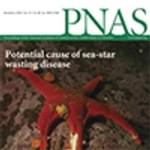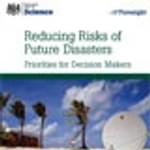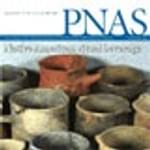Institute for
Emerging Infections
The Institute for Emerging Infections was established in 2011 and it continued to receive funding from the School until 2015.
the project
New infections still present a threat to humanity. Novel pathogens often infect humans, but it is not yet well understood why only some pathogens acquire the ability to spread efficiently to other humans.
With greater insight into how chronic viral infections such as HIV, hepatitis C and influenza spread across populations, we can improve our progress in developing new and effective treatments to cure infectious disease. We aim to develop and implement strategies that tackle infections that persist in the host – often for a lifetime.
We combine the expertise of mathematicians and phylogeneticists who can manage huge amounts of data, with that of clinicians treating the affected individuals and laboratory scientists investigating disease pathogenesis. Bringing together these three groups of experts allows new questions to be tackled and, in particular, the development of new methods to make sense of the vast amounts of data produced with new experimental techniques.
John Frater’s group has identified biomarkers to help predict HIV positive patients who might be more ‘curable’, helping to shed light on the phenomenon known as ‘post-treatment control’, where the virus remains undetectable in some patients even after treatment is stopped. Professor Frater also receives support from the Oxford Martin School for his work on the HIV cure-targeting CHERUB collaboration between Oxford, Cambridge, Imperial, King’s College and UCL.
Ellie Barnes’ group is tackling issues around genetic variation of the hepatitis C virus, investigating the implications for how the virus develops and the potential for vaccines against it. They lead a national collaboration that has successfully developed high throughput HCV genomic sequencing, crossing traditional scientific boundaries with the integration of viral sequence data with host genetic analysis.
Investigating how host immune response controls complex pathogens, Paul Klenerman and his team are studying data derived from pandemic influenza, dengue and hepatitis C infection, using novel genomics technologies to probe the quality of immune responses.
The modelling and mathematical components led by Professor Angela McLean have brought unique insights and findings that would be otherwise impossible to disentangle. A study published in Nature shows convincing evidence that current HIV therapies may not block all HIV replication – as is the current but hotly contested dogma – but that there may be hidden sanctuaries of on-going virus production. These landmark data have major impacts for research strategy and the development of new interventions.
Oliver Pybus has developed new approaches to data interpretation that can analyse hundreds or thousands of viral sequences. Applications of these sort of approaches have allowed him to document the history of the HIV epidemic in central Africa and, more recently, to track the introduction and spread of Zika virus into the Americas.
Daniel Wilson and his group have developed new genetics methods that allow them to measure how infections are transmitted. For example, they have applied their methods to the Ebola virus (determining how it is transmitted between bats and humans), to drug-resistance in tuberculosis and to the outbreak of potentially lethal Klebsiella infections in neonatal units in Nepal.
videos
"Infectious disease: are we in control?" with Prof Jeffrey Almond
"Eradicating Hepatitis C and HIV: progress and challenges for the next ten years" with Prof John Frater & Prof Ellie Barnes
From risk to opportunity - 2013 Ideas Lab at the World Economic Forum
"Ethics and infectious disease – navigating the moral maze of pandemic control" with Prof Paul Klenerman
"Pandemics - Can we eliminate major worldwide epidemics?" with Dr Larry Brilliant
By birds or mosquitoes? West Nile Virus spread examined
How serious is the threat of a future flu pandemic?
How does an interdisciplinary approach help research?
What is the best strategy for stopping the spread of infectious disease?
Hyperconnectivity, creativity and collapse
Emerging infectious diseases
Viruses as shapeshifters - from infection to epidemic
What makes a pathogen transmissible?
publications

The Immune System: A Very Short Introduction

Impact of pre-adapted HIV transmission

Persistent HIV-1 replication maintains the tissue reservoir during therapy

Immunological biomarkers predict HIV-1 viral rebound after treatment interruption

Thirty years of treating HIV-1 infection: where next?

Impact of HLA-driven HIV adaptation on virulence in populations of high HIV seroprevalence

Global Distribution and Prevalence of Hepatitis C Virus Genotypes

Short-Course Antiretroviral Therapy in Primary HIV Infection

Reducing Risks of Future Disasters

Unifying the spatial epidemiology and molecular evolution of emerging epidemics

Bridging the gender gap in UK science

There is no safe dose of prions

Infectious Disease Ethics: Limiting Liberty in Contexts of Contagion

Role for antibodies in HIV-1 infection control

Macroevolution of Complex Retroviruses

Evolution and emergence of novel human infections

A transitional endogenous lentivirus from the genome of a basal primate and implications for lentivirus evolution

Antiviral treatment for the control of pandemic influenza: some logistical constraints

Understanding the impact of Hib conjugate vaccine on transmission, immunity and disease in the United Kingdom

Quantifying the risk from ovine BSE and the impact of control strategies
Keep in touch
If you found this page useful, sign up to our monthly digest of the latest news and events
Subscribe